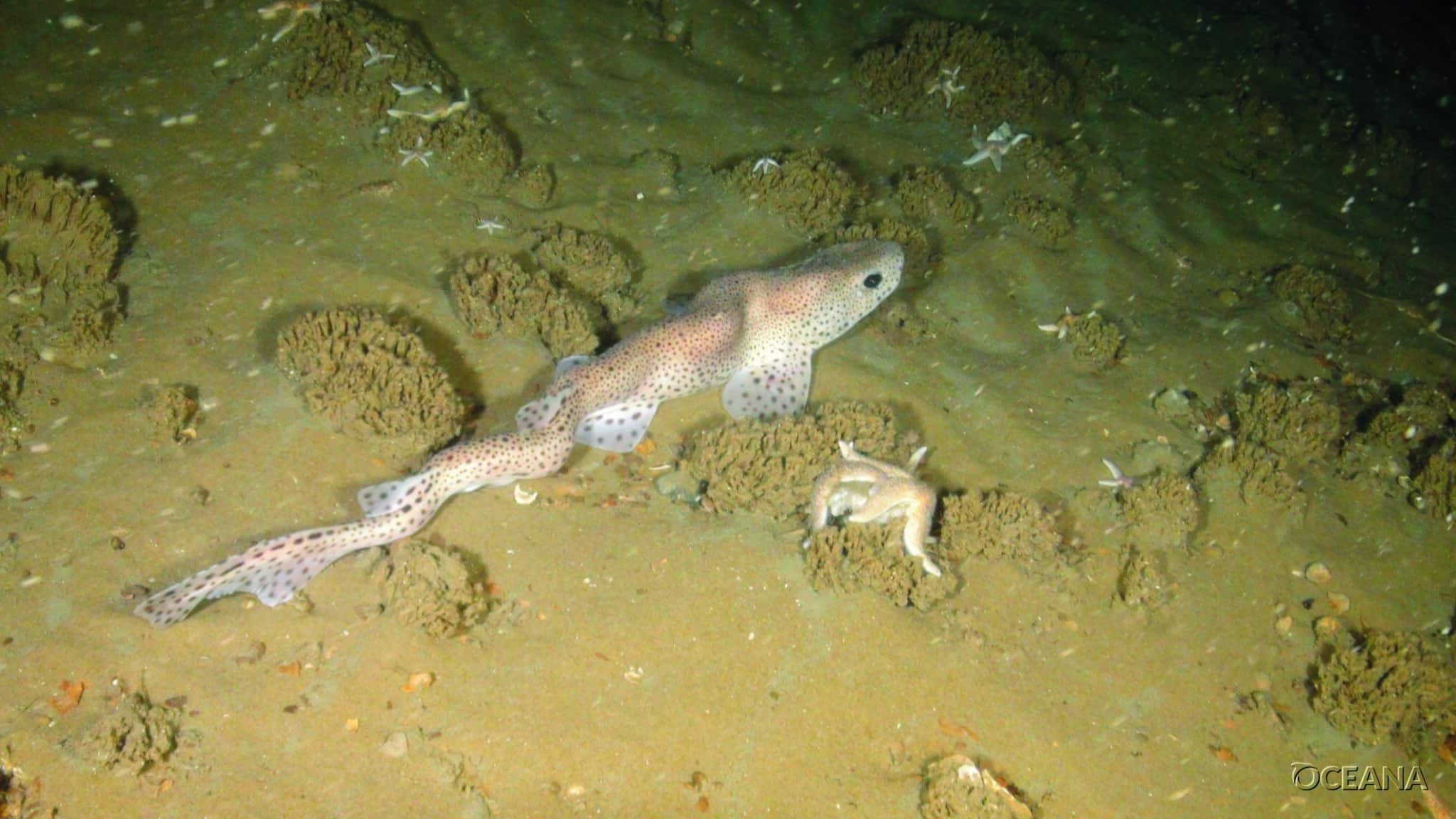
Sabellaria Reefs: Ugly and Fragile, Yet Incredibly Important Emblems of Dutch Waters

Oceana
By Agata Mrowiec
“Beauty is in the eye of the beholder,” an old adage says. This phrase is even more relevant when talking about hidden gems lying in sea-bottom areas of the North Sea, which many consider to be a cold and dark sea, composed of murky waters and dull animals living in it.
In 2016, Oceana Europe’s marine biologists carried out our first research expedition to study the sea floor of the North Sea. What you might think we expected in this part of Europe’s sea was rain, wind and animals you’ve never heard of, or you don’t even care about because they are most probably ugly anyway. Yet the results of the 2016 study gave us a good reason to go back to the region in 2017, to search for additional evidence to help advance the protection of vulnerable and threatened species and habitats in the region. The North Sea is a fairly well-studied sea, but little is known about the communities residing on the seafloor in some areas, particularly in offshore waters. Oceana’s mission during both years of research was to gather and bring back information from potentially important areas, which was lacking for building the scientific case for their protection, either through designation or expansion of protected areas, or recommendations for management.
Worm Reefs, an Unexpected Finding in Dutch Waters
Not only corals build up reefs. There are many examples of marine animals that play a similar function in the underwater ecosystem. One of them is mostly known to marine experts — Sabellaria spinulosa — a worm that builds and lives in tubes. When thousands of these tubes are formed together, the worm creates a reef. It is right to call Sabellaria (ross worm) a habitat engineer, due to its ability to create a habitat for a multitude of species, like crabs, common sea stars, and fishes, such as common dragonet and small-spotted catshark. These reefs are true biodiversity hotspots since they support higher levels of biodiversity than the sandy areas that surround them. The fact that there are living Sabellaria reefs in Dutch waters was a surprising and important discovery made during our 2017 expedition, especially, because they were believed to have disappeared from the Dutch part of the North Sea, due to intense human activity, including overfishing. Oceana scientists documented them in at least three locations of the Dutch side of Brown Bank, an area within the southern North Sea that spans both Dutch and UK waters.
In addition to the reefs, Brown Bank is an ecologically important area, that supports abundance of cetaceans and seabirds. It also serves as an essential spawning habitat for a variety of commercial fish species in the North Sea, like cod, herring, mackerel, sprat and plaice. Sadly, it is not free from human impact. Intense bottom fishing, wind energy development, oil and gas exploitation, and ship traffic are among the main threats to biodiversity and ecosystems in Brown Bank.
Importance of Protecting Brown Bank

Importance of Protecting Brown Bank
While the UK side of the Brown Bank has been granted national protection by law for just one species (harbor porpoise), there are no measures in place to preserve the fragile sea life on the Dutch side. Protection of the Brown Bank has been long considered a priority for the Dutch government, but even though the area meets the necessary requirements for designating as a marine protected area, the Dutch authorities have so far failed to take action.
Oceana’s discovery of ecologically important Sabellaria reefs points towards legal obligations to protect them. The Dutch government has already committed to conserving and restoring living reefs. At the international level, ross worm reefs are also officially recognized as requiring conservation action; they are listed as threatened/declining by OSPAR Convention for the Protection of the Marine Environment of the North-East Atlantic. Countries that are signatory to OSPAR (like the Netherlands and UK) are therefore obliged to take action to study and conserve them.
A recently published UN global assessment report paints a dire picture of the heavy human footprint on our planet, including biodiversity loss.
As much as there is strong evidence for global threats such as climate change and plastics, our oceans also face problems on a more local level, including some that are not well-known. The rare occurrence of fragile Sabellaria spinulosa reefs creates a clear opportunity for the Dutch government to designate Brown Bank as a marine protected area, and to create measures that would ensure its full protection from the impact of human activities.
With so much destruction already caused by humankind, actions to save our planet — and ultimately ourselves — must be taken now.
Oceana’s North Sea project could have not been possible without a generous support by the Dutch Postcode Lottery. The project is being carried out in collaboration with the North Sea Foundation. Scientists from the DISCLOSE project also collaborated with Oceana during the Dutch part of the 2017 expedition.

 233k
233k  41k
41k  Subscribe
Subscribe 